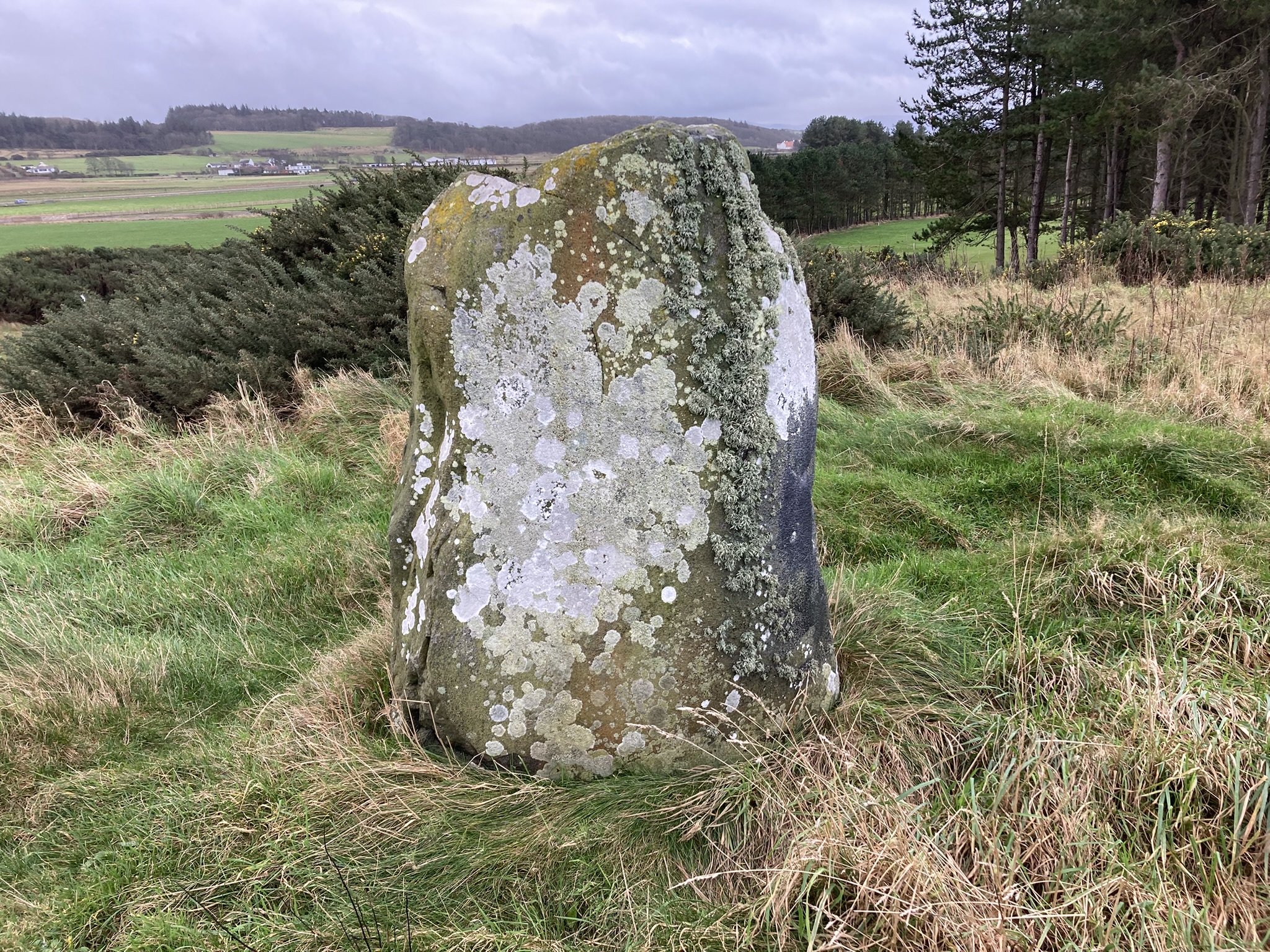
N Face of Bain’s Hill Standing Stone.

N Face of Bain’s Hill Standing Stone.

E Face of Bain’s Hill Standing Stone.

S Face of Bain’s Hill Standing Stone.

W Face of Bain’s Hill Standing Stone.
Bain’s Hill or the Stinnie Stane is located at the northern boundary of Trump Turnberry. Park in the Malin Court Hotel restaurant car park. Head up to the flagpole and you will see the stone at the top of the hill.
Bain’s Hill is listed under Canmore ID 40856 (go to Links).
This short north-west facing piece of land has a nice bit of folklore to go with it. Robert the Bruce was watching this shore from Arran, waiting for the signal that told him it was a good moment to return to the mainland and oust the English. Unfortunately it was all a bit of a mistake and he ended up retreating to the mountains (though he did take the castle at Turnberry later).
It is still generally reported, and religiously believed by many, that this [beacon] fire was really the work of a supernatural power, unassisted by the hand of any mortal being; and it is said, that for several centuries the flame rose yearly at the same hour, of the same night of the year, on which the king first saw it from the turrets of Brodick Castle, while some go even so far as to say, that if the exact time were known, the fire would still be seen. That this superstition is very ancient, is evident from the place where the fire is said to have appeared being called Bogle’s Brae (the ghost’s hill side,) beyond the remembrance of man. In support of this curious belief, it is said that the practice of burning heath for the improvement of land was then unknown, a spunkie (jack o’lantern) could not have been seen across the Firth of Clyde between Ayrshire and Arran, and that the messenger was Bruce’s kinsman, and never suspected of treachery.
All very confusing. From a note to Scott’s “Lord of the Isles” (canto 5), 1815.
This dolerite stone, 1.7m tall, was recorded as the ‘Stinnin Stane’ in 1895. According to the RCAHMS record it “occupies a prominent position on top of a small hill.”
Bain’s Hill Standing Stone















